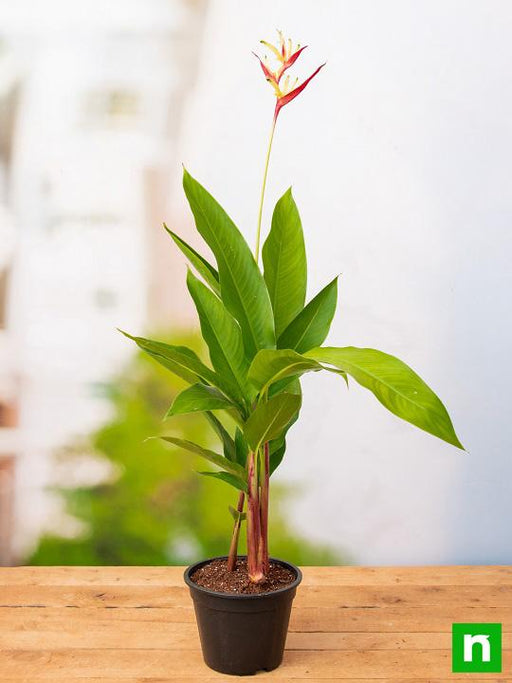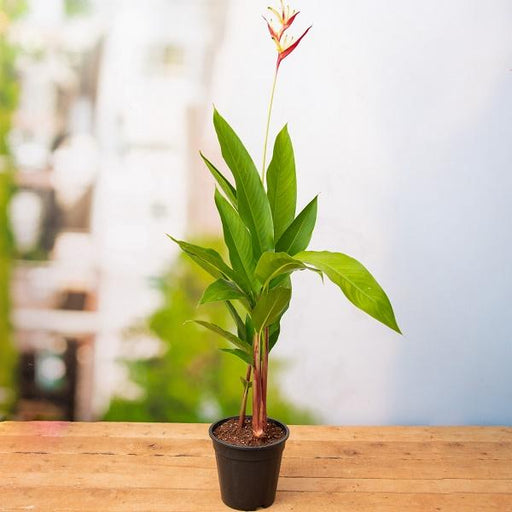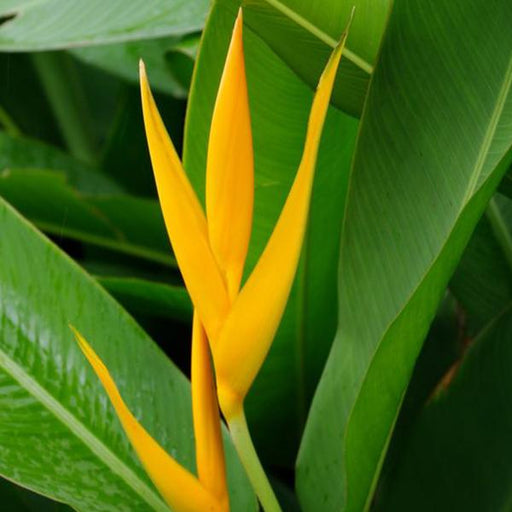Heliconia varieties
Heliconia plants come in a variety of shapes, sizes, and colors. From the bright red and yellow Lobster Claw to the vibrant orange and pink Parrot's Beak, there is a heliconia to suit any garden. Discover the different types of heliconia plants and find the perfect one to brighten up your outdoor space.
Heliconia care
To ensure that your heliconia plants thrive, it's important to give them the proper care. This includes regular watering, fertilizing, and pruning. Learn about the best practices for taking care of heliconia plants and keeping them healthy and vibrant.
Heliconia flowers
Heliconia plants are known for their stunning, tropical flowers. With their bright colors and unique shapes, these blooms are sure to add a pop of color and texture to any garden. Explore the different types of heliconia flowers and learn about their characteristics and growing conditions.
Heliconia leaves
In addition to their flowers, heliconia plants also have unique and interesting leaves. From long and slender to broad and lush, these leaves add texture and depth to any garden. Discover the different types of heliconia leaves and find out how to care for them.
Heliconia propagation
If you're interested in growing your own heliconia plants, propagation is a great option. This involves taking a cutting from an existing plant and rooting it to create a new one. Learn about the different methods of heliconia propagation and how to successfully propagate your own plants.
Heliconia diseases
Like all plants, heliconia plants can be susceptible to a range of diseases and pests. From fungal infections to insect infestations, it's important to be aware of these issues and take steps to prevent and treat them. Discover the common heliconia diseases and how to keep your plants healthy and disease-free.
Heliconia pests
In addition to diseases, heliconia plants can also attract a variety of pests. These can include mites, thrips, and scale insects, among others. Learn about the different types of heliconia pests and how to identify and control them.
Heliconia landscape
Heliconia plants are a great addition to any tropical or subtropical landscape. With their striking flowers and foliage, they can add color and texture to borders, garden beds, and even containers. Explore the best ways to incorporate heliconia plants into your landscape design.
Heliconia symbolism
In addition to their beauty, heliconia plants also have symbolic meaning in some cultures. For example, in Hawaii, the plant is associated with hospitality and is often used to decorate homes and businesses. Learn about the different meanings and symbolism behind heliconia plants.
Heliconia arrangements
With their vibrant colors and unique shapes, heliconia flowers are a popular choice for floral arrangements. From simple vases to elaborate centerpieces, these blooms can add a tropical touch to any occasion. Discover different ways to use heliconia flowers in arrangements and create stunning displays.
Heliconia art
Heliconia plants have long been a source of inspiration for artists and designers. From paintings and sculptures to textiles and wallpaper, these plants have been incorporated into a variety of art forms. Explore the different ways that heliconia plants have been used in art and design.
Heliconia photography
With their striking colors and unique shapes, heliconia plants make for great photography subjects. Whether in the wild or in a garden setting, these plants can create beautiful and dramatic images. Learn tips and tricks for photographing heliconia plants and capturing their beauty on camera.
Heliconia arrangements for events
If you're planning a tropical-themed event, heliconia flowers can be a great addition to your decor. From weddings and parties to corporate events and trade shows, these blooms can add a touch of exotic elegance. Discover different ways to use heliconia flowers in event decor and create a memorable atmosphere.
Heliconia landscaping ideas
Heliconia plants can be used in a variety of landscaping styles, from formal to casual, modern to traditional. With their bold colors and unique shapes, they can create eye-catching focal points or add texture and interest to garden beds. Explore different heliconia landscaping ideas and find inspiration for your own outdoor space.
Heliconia arrangements for home decor
In addition to events, heliconia flowers can also be used to add tropical flair to your home decor. From simple arrangements in vases to elaborate centerpieces, these blooms can create a vibrant and exotic atmosphere. Discover different ways to use heliconia flowers in your home decor and bring a touch of the tropics indoors.
Heliconia crafts
If you're feeling crafty, heliconia plants can be used in a variety of DIY projects. From creating wreaths and garlands to making paper flowers and pressed botanical art, these plants can inspire creativity in a variety of mediums. Learn about different heliconia craft ideas and get inspired to create something unique.
Heliconia natural remedies
Some cultures have used heliconia plants for their medicinal properties. From treating skin conditions to relieving respiratory issues, these plants are believed to have a range of healing properties. Learn about the different natural remedies associated with heliconia plants and how to use them safely and effectively.
Heliconia botanical gardens
If you're a fan of heliconia plants, visiting a botanical garden that specializes in tropical plants can be a great experience. These gardens often have a wide variety of heliconia species on display, as well as other tropical plants and exotic wildlife. Discover different heliconia botanical gardens around the world and plan your next adventure.
Heliconia symbolism in art and literature
In addition to their cultural symbolism, heliconia plants have also been featured in art and literature throughout history. From ancient Mayan ceramics to contemporary paintings and poetry, these plants have inspired artists and writers alike. Learn about the different ways that heliconia plants have been used in art and literature and their significance.
Heliconia conservation
As with many tropical plants, heliconia species are threatened by habitat loss, climate change, and other environmental factors. Supporting heliconia conservation efforts can help preserve these plants for future generations to enjoy. Learn about different heliconia conservation organizations and ways to get involved in protecting these beautiful plants.











































